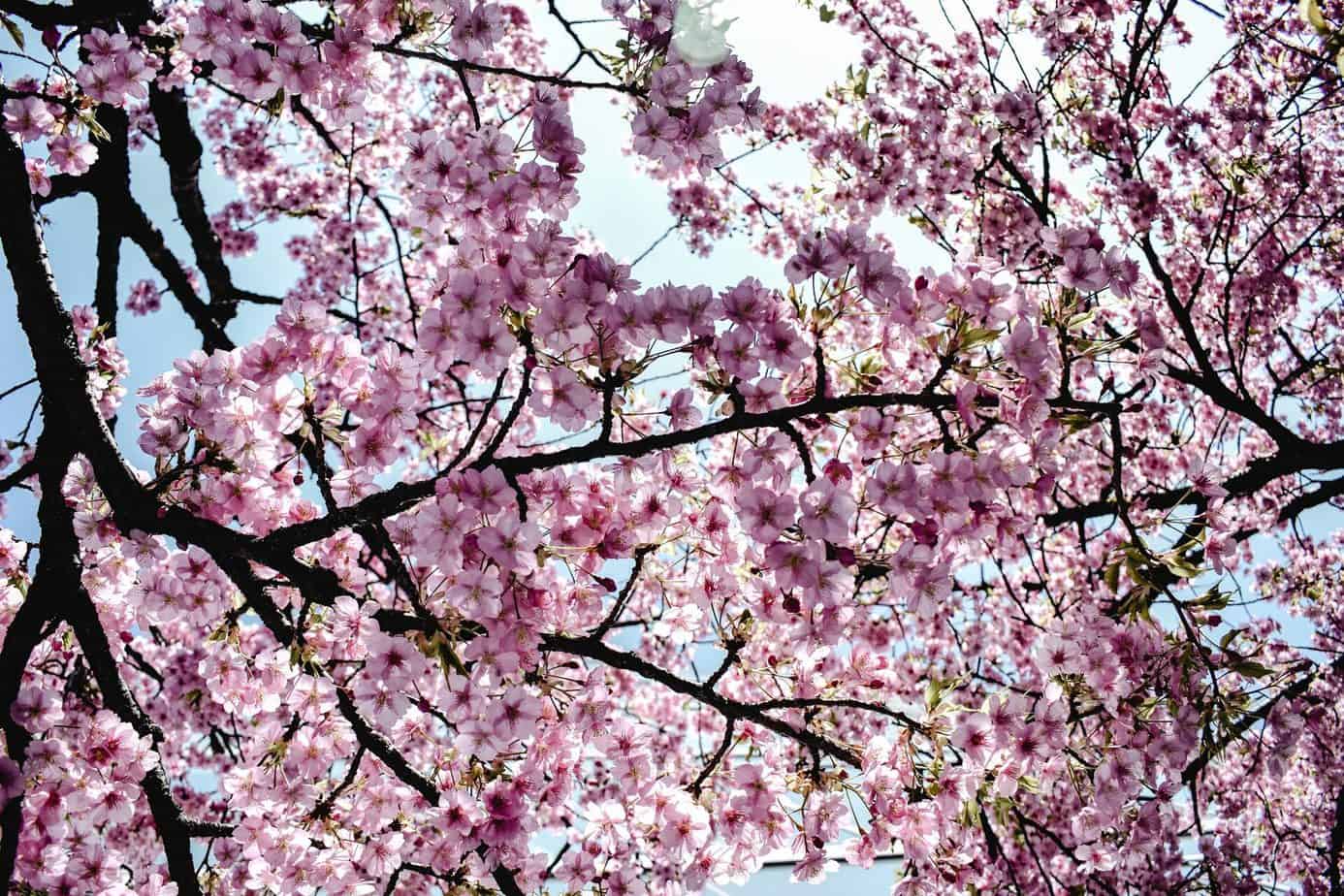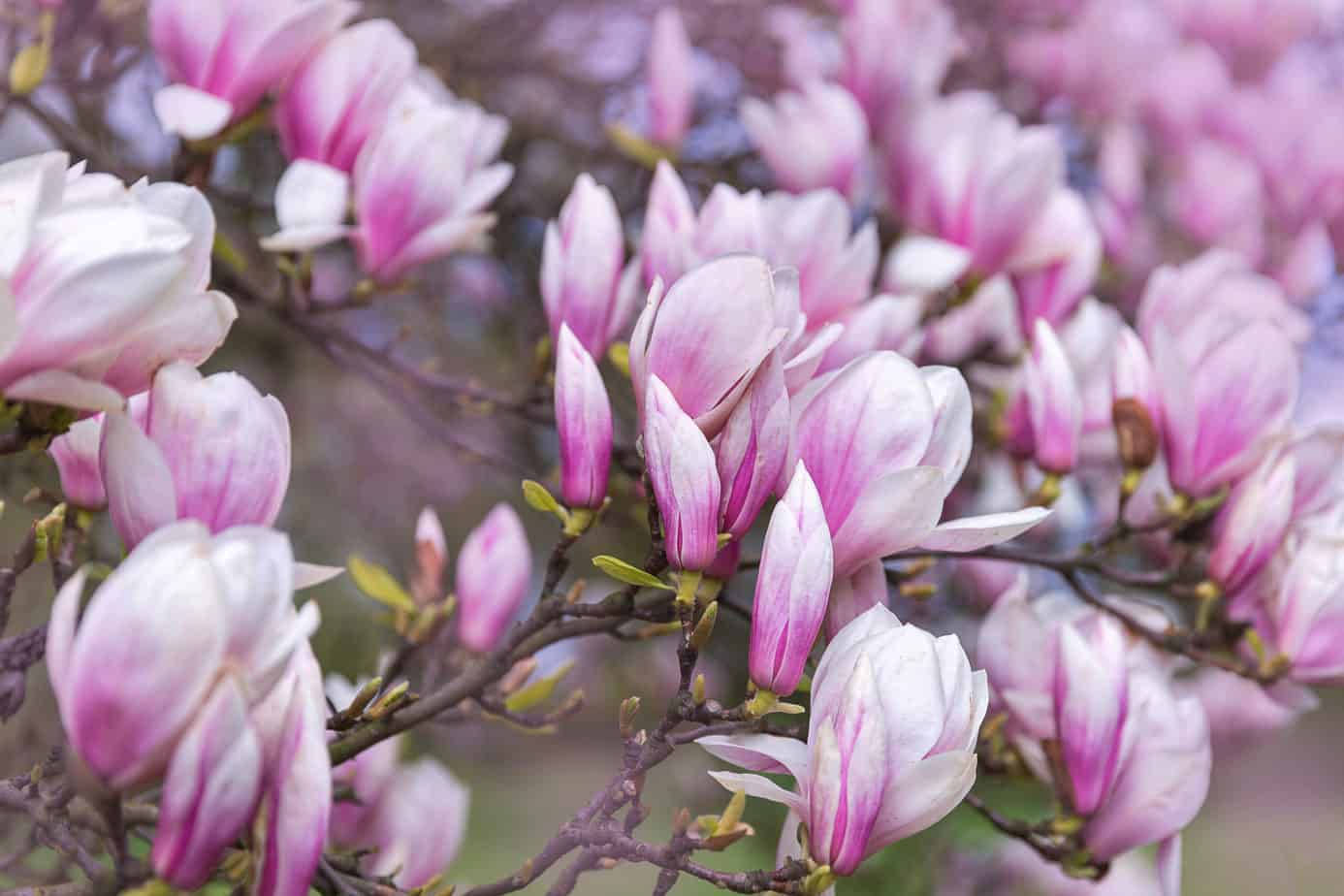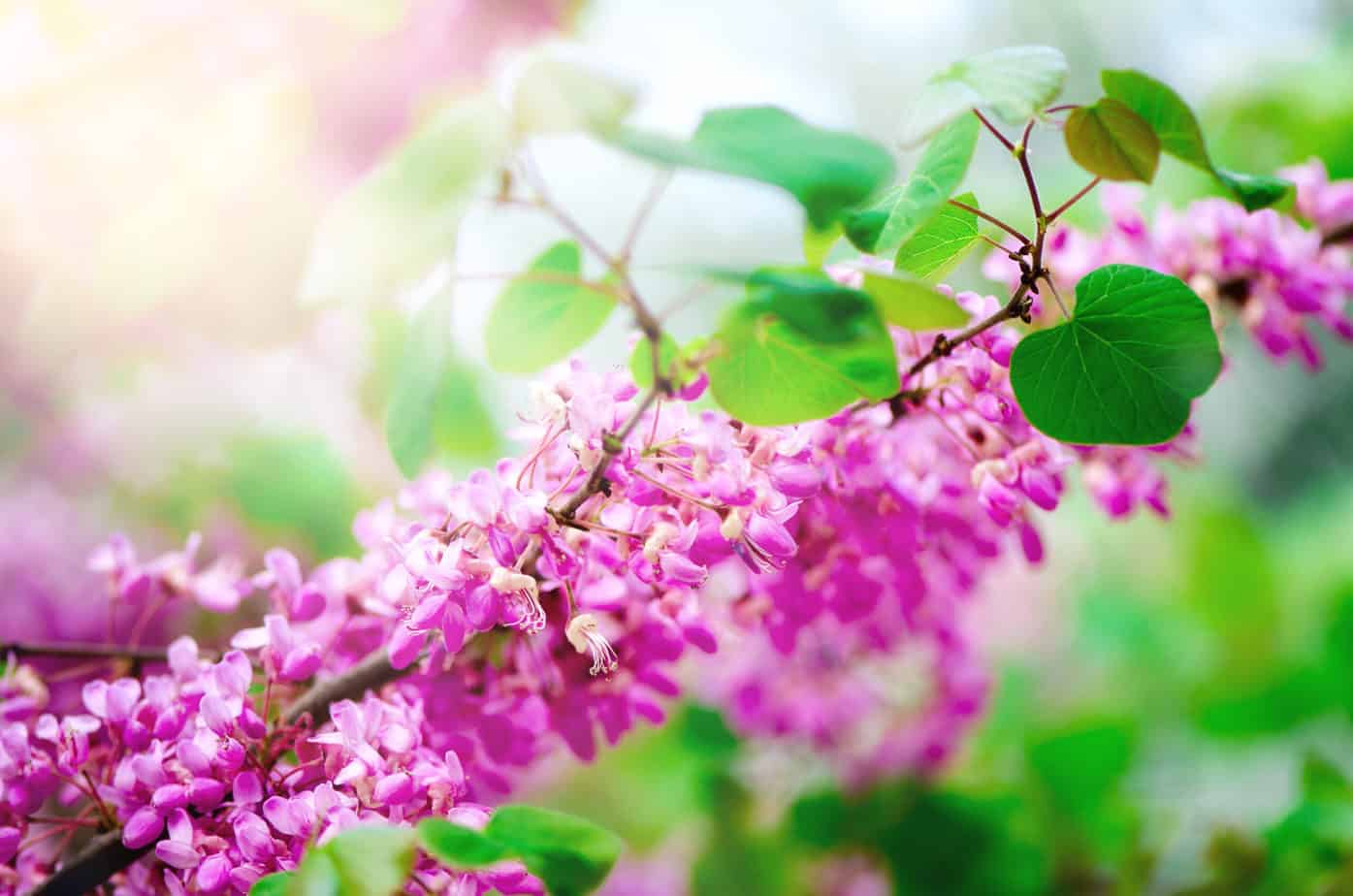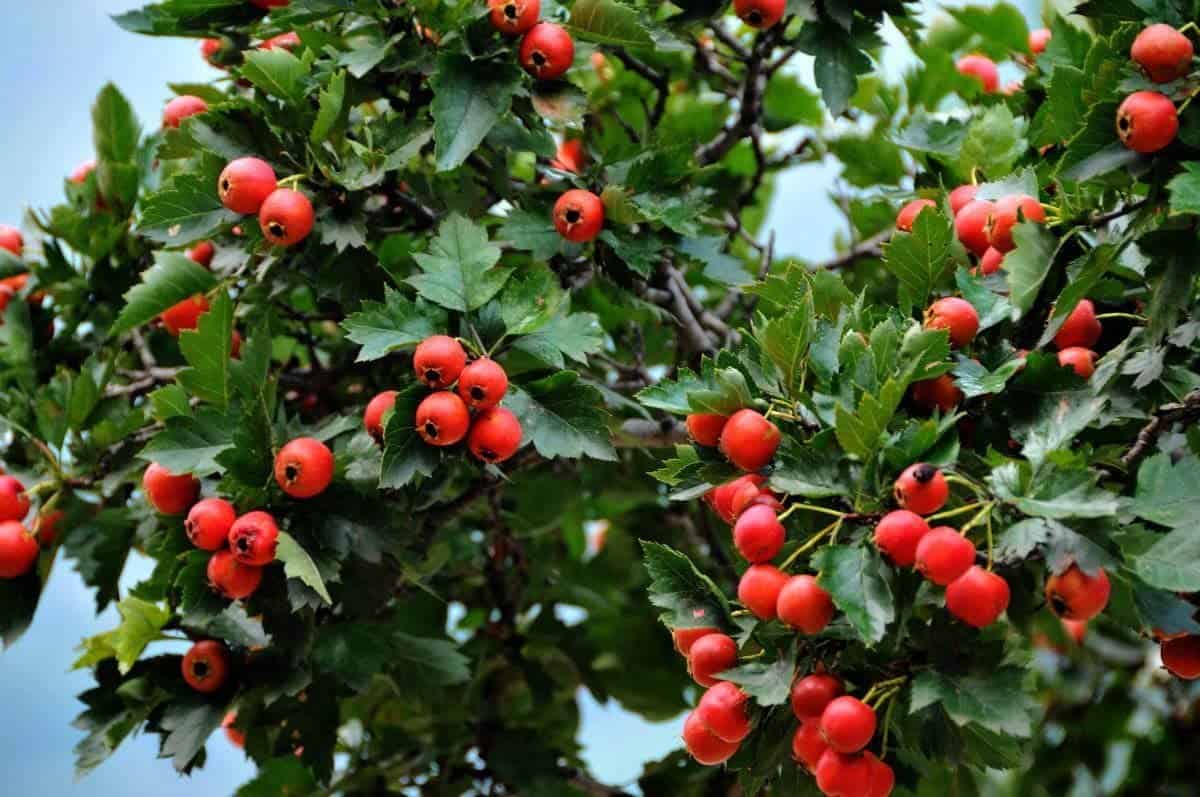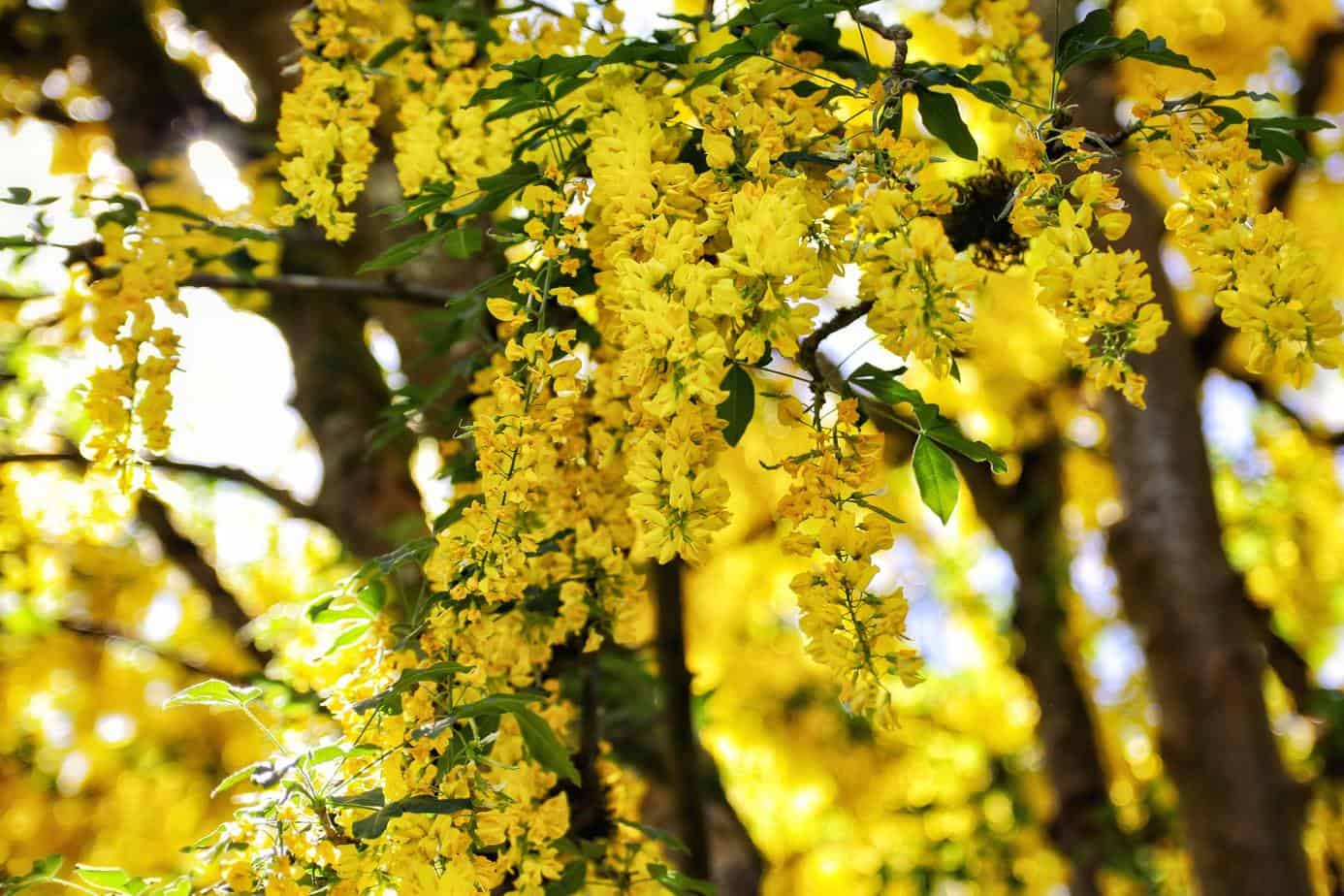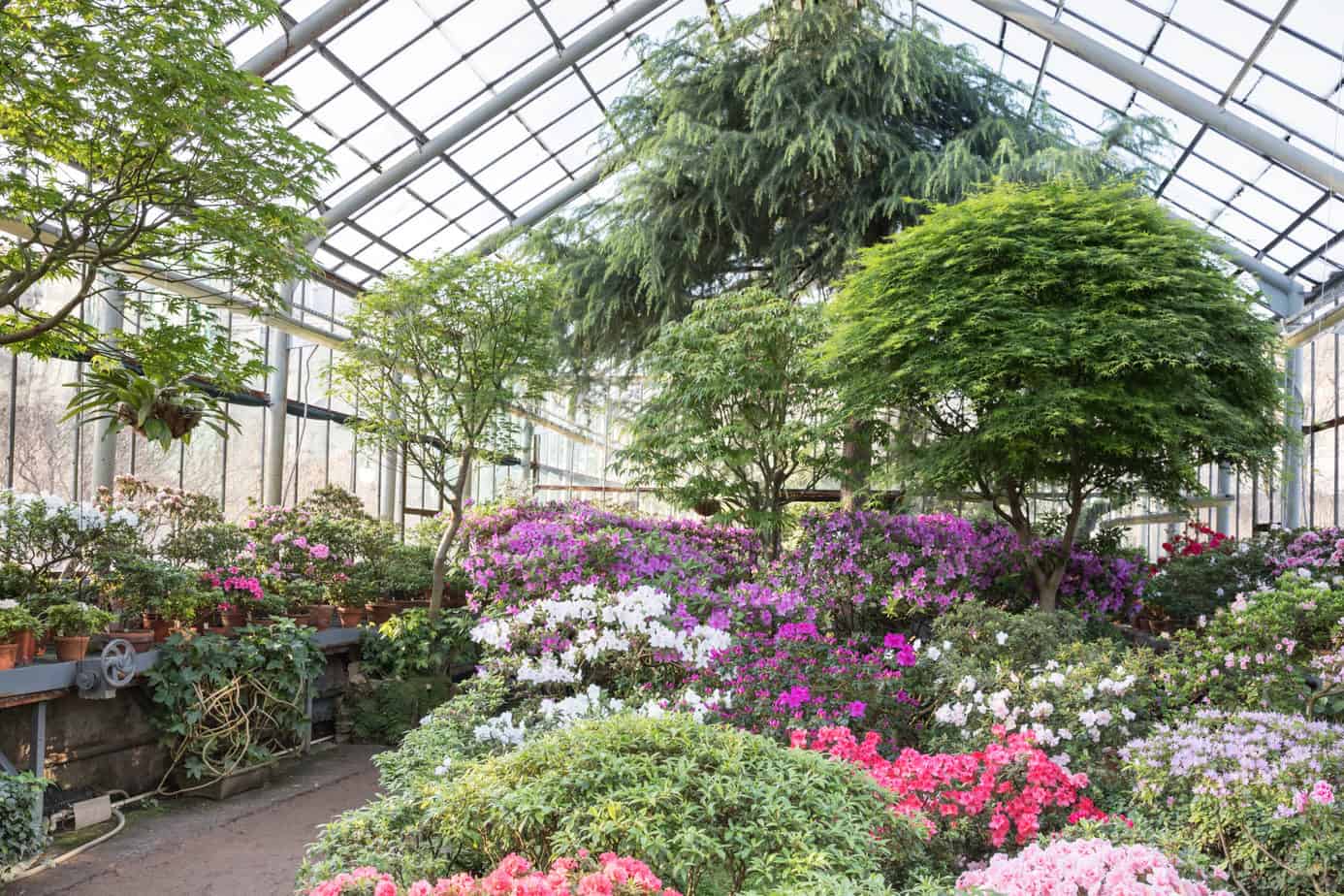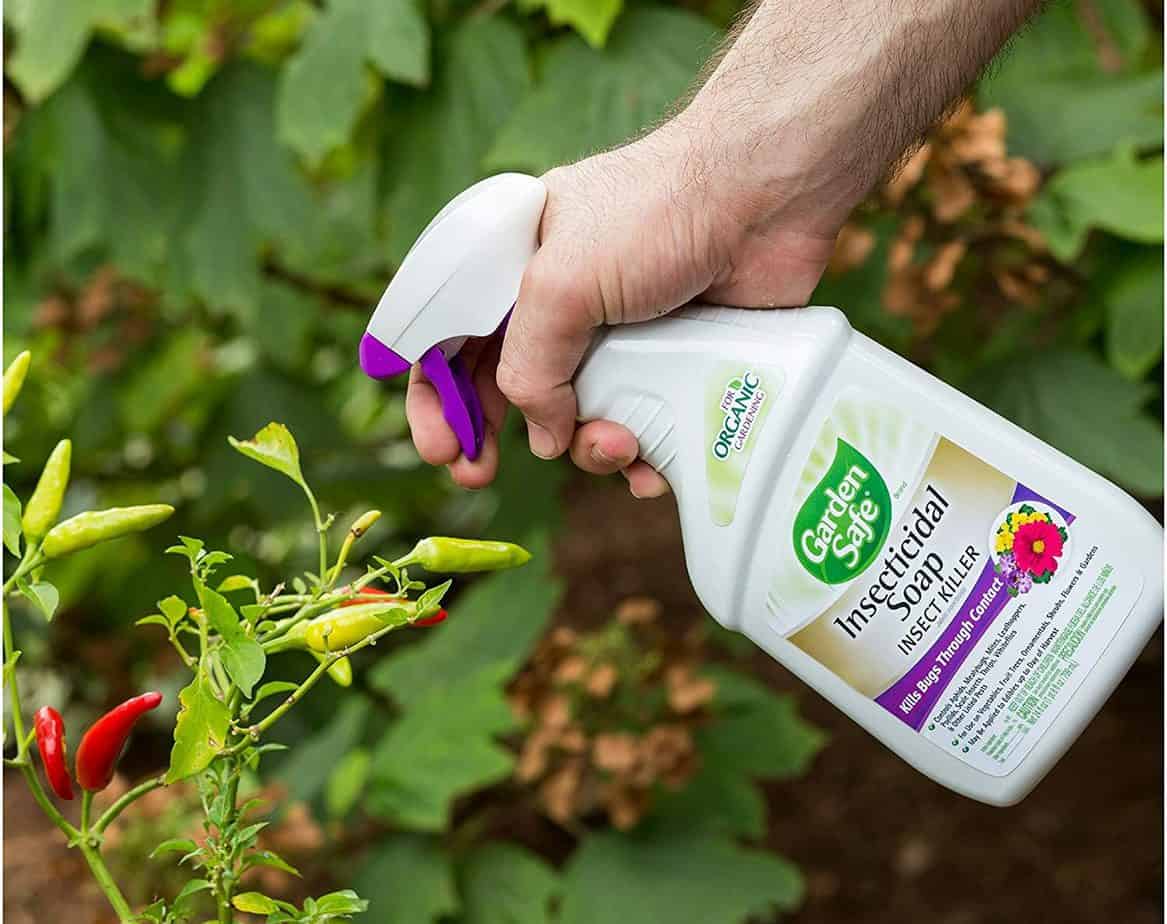- Majesty Palm Tree: How to Plant It and Keep It Alive - March 13, 2021
Majestic trees make your property values go up, and it looks a whole lot more regal with their strong trunks and green canopies. But flowering trees can help add beauty to your yard when it blooms. Suddenly, your garden isn’t just all green, with a touch of red, pink, white, and other colors. Fortunately, there are types of flowering trees that you can plant and enjoy.
How do you ensure healthy and thriving flowering trees? And where do you buy the seeds or small trees for your yard? Discover the answer to these questions and everything you need to know about flowering trees: read on!
How to Identify the Different Types of Flowering Trees
With hundreds of different types, there are no hard and fast rules in identifying flowering trees. The first thing you should be looking at is the color, shape, size, and arrangement of the flowers. This will help you know for sure what type of flowering tree you have.
But what if the tree doesn’t have any blooms? Or if the flowers are similar to that of other species? Then you can check out the fruit, leaves, bark, size, and other features of the tree. As you can guess, you will need to be familiar with different types of flowering trees first before you can accurately identify one. So here are the most popular and some of the most beautiful flowering trees that you should know.
Weeping Cherry
Weeping cherry, or Prunus pendula, trees add a beautiful curtain of flowers from its drooping branches. The branches are flexible and slender when young, which allows the tree to have that weeping look.
However, once these branches develop, they become stiffer and firmer. The flowers start blooming in spring, blanketing the whole tree with pink or white flowers.
Sometimes, the flowers come first then the leaves return. The flowers are formed in clusters, and as a whole, the weeping cherry looks splendidly majestic, making it an excellent addition to Japanese gardens, patios, or informal cottage gardens.
Quick Care Guide:
- USDA Hardiness Zones: 6 to 8
- Full sun
- Average water needs
- Low maintenance
- Clay, loam, sand, or chalk soil type
- Any soil pH
- A moist and well-draining soil
Saucer Magnolia
The Magnolia x soulangeana ‘Alba Superba’ is a kind of saucer magnolia. This small tree produces fragrant white flowers that are shaped like tulips. The white flowers have a pale pink or purple base. When spring comes, the flowers come out first while the leaves begin to appear a few weeks later. The saucer magnolia can grow up to 20 feet (six meters) tall. This tree is best for small gardens.
Quick Care Guide:
- USDA Hardiness Zones: 6 to 9
- Full or partial sun
- Average water needs
- Low maintenance
- Clay or loam soil
- Neutral or acidic soil pH
- A moist but well-draining soil
Eastern Redbud ‘Ace of Hearts’
The eastern redbud ‘Ace of Hearts‘ has a canopy that’s shaped like a dome. This dense deciduous tree has clusters of purplish-red flowers that cover the bald branches when spring comes. For two to three weeks, this three will have these attractive flowers. The foliage starts to appear after the flowers bloom. The heart-shaped leaves are dark green but will turn into different colors in the fall.
After the show of colors, the leaves will drop. But don’t worry when the foliage is gone. You can still enjoy the unusual branching patterns of this tree. The Cercis canadensis ‘Ace of Hearts’ grows up to 12 feet (3.6 meters) tall and 15 feet (4.5 meters) wide.
As a dwarf tree, the Ace of Hearts will be a great addition to any yard or garden.
Quick Care Guide:
- USDA Hardiness Zones: 5 to 9
- Full or partial sun
- Average water needs
- Low maintenance
- Clay, loam, chalk, or sandy soil
- All soil pH
- Well-draining soil
Washington Hawthorn
Washington hawthorn, or Crataegus phaenopyrum, is ideal for those who like a splash of color in their gardens or yards well after other flowering trees have lost their blooms. These low-branching trees have a rounded or oval crown. It produces flowers starting from late spring to the early days of summer.
You can enjoy thick clusters of white flowers. The horizontal branches will have glossy leaves that have anywhere from three to five lobes. More than the white flowers, you will love the fall colors that this tree gives you in the fall. You can watch it turn in a wide variety of colors, including orange, purple, and red.
During early winter, the tree will have red fruits that grow amongst the foliage. This tree can reach up to 25 feet (7.5 meters) tall and 20 feet (six meters) wide.
Quick Care Guide:
- USDA Hardiness Zones: 4 to 8
- Full sun
- Low to average watering needs
- Average maintenance
- All soil types and pH
- A moist and well-draining soil
Golden Chain Tree
The Laburnum x watereri ‘Vossii’ or golden chain tree has drooping clusters of yellow flowers. From afar, you will appreciate the curtains of flowers.
These clusters of blooms are long, reaching lengths of 24 inches (60 centimeters). This small tree is magnificent when it’s in full bloom, but you do have to work hard. It likes full or partial sun and requires soil that is well-draining with lots of organic matter.
It gives you maximum bloom when it gets full sun, but it does like partial shade in the afternoon. Finding the perfect location for this tree is important as it doesn’t tolerate high temperatures and humidity. It’s also prone to insect attacks, especially mealybugs, twig blight, leaf spot, aphids, and twig blight. There’s also some maintenance involved, as you will need to prune the root suckers and take out the seedpods.
The golden chain tree is also poisonous. If you have small or younger kids, it might be best to avoid putting this tree in an area where your kids can go.
Quick Care Guide:
- USDA hardiness zones: 6 to 8
- Partial or full sun, but prefers full sun for best flowering conditions
- Average water and maintenance required
- Chalk, sand, loam, and clay soil
- Grows in all soil pH
- Well-draining and moist soil
Crape Myrtle ‘Delta Fusion’
The Lagerstroemia ‘Delta Fusion’, a form of crape myrtle, is a small tree that gives you burgundy leaves that provides a backdrop for its dark pink flowers. These flowers appear in the summer and right through fall. More than the strong and rich colors, the crape myrtle ‘Delta Fusion’ gives your gardens a dash of beauty after the other trees have lost their blooms.
This small tree grows up to 12 feet (3.6 meters) tall and can be up to six feet (1.8 meters) wide. Ti grows well in full or partial sun. What’s more, it’s tolerant of drought, heat, and deer. You will not have to worry too much about pests and diseases. You can use this as a specimen plant, informal hedges, or foundation plant.
Quick Care Guide:
- USDA Hardiness Zones: 7 to 10
- Full or partial sun
- Average water needs
- Low maintenance
- Sand, loam, or chalk soil with any pH level
- Well-draining soil
Where Do These Flowering Trees Grow
As you can see, different types of flowering trees grow in different USDA zones. Most flowering trees thrive in USDA hardiness zones 6 to 10, where the climate is temperate year-round. However, several flowering trees can survive cold winters, such as the flowering crabapple, pagoda dogwood, and the Japanese lilac tree.
On the other hand, there are also flowering trees that can survive the hottest summer days. Drought-tolerant flowering trees such as pacific dogwood, orchid tree, empress tree, and blue jacaranda.
Going Native
We’d admit that there’s an allure to planting an exotic tree and boast of unique flowers when it blooms. But some people say that native trees are better for the following reasons:
- Native trees are more adaptable to your area’s climate and growing conditions.
- Native trees are less prone to disease and pests.
- Wildlife relies on native trees for food, shelter, and even as places to lay their eggs in.
However, according to the Oregon Department of Forestry, these are simply not true. Some non-native trees might even be more adaptable to your local growing conditions. Insects might be attracted to a particular form of the tree, preferring to infest a deciduous tree rather than a conifer. And wildlife can very much benefit from non-native trees as they will from native ones.
What you should watch out for are invasive flowering trees that can reproduce both sexually and asexually, grows and reproduces fast, and have high rates of dispersal. Invasive species are more likely to bring environmental problems.
Uses of Flowering Trees
Grown for their flowers and the splash of color they bring, flowering trees can become a beautiful addition to your yard or garden. You can enjoy the fragrance that the flowers bring, while some trees even have edible fruits for animals.
Not only that, but these flowering trees can provide some shade for those sweltering summer days. If you plant these in the right place, flowering trees can even help keep your home cool and reduce energy costs.
Some flowering trees can even become specimen plants, impressive enough to become the focus of interest in your garden.
How to Grow Flowering Trees From Seed
For the most part, you only have to bury the seeds of your flowering tree at the right depth to make sure that it germinates. You should also remember that some seeds will be dormant. If all flowering trees have seeds that automatically germinate as they fall to the ground in the summer or fall, then their saplings will be killed by the cold during winter.
However, you can also go through assisted germination, where you mimic how these seeds are germinated in the wild. Here are some of these methods:
Scarification
This process involves breaking or scraping the seed coat, allowing moisture to get into the embryo and jump-start the germination. If your chosen flowering tree has seeds with hard shells, then you might need to do this process.
This video will show you how to scarify seeds so that they germinate faster.
Cold Stratification
When it comes to stratification, you will copy what happens to the seeds in nature. To do this, you need to expose the seeds to moist and cold conditions.
This video will explain cold stratification in more detail, plus how you can germinate your flowering tree seeds by this method.
Warm Stratification
If cold stratification mimics the conditions that seeds need to break their dormancy over the winter, warm stratification will break the summer dormancy of the seed. This process will give your seeds the same conditions as when it’s buried in warm, damp soil.
Planting the Germinated Flowering Tree Seeds
Once you see that the roots have sprouted, you can plant these newly germinated seeds in individual containers or seed trays. Make sure that you plant them at the recommended depth. For bigger seeds around 0.3 inches (0.8 centimeters) tall, just press the seed into the soil until half of it is buried. If you are dealing with smaller seeds, you can sprinkle them over the soil’s surface.
Then cover the sprinkled seeds with sand, which should be as deep as the seeds’ thickness. Water the newly planted seeds, but be sure to only keep them moist, not wet. You should make sure that these seeds are exposed to the right moisture and humidity requirements, and you can be sure that they will successfully sprout. You can cover the entire pot or tray with plastic to keep the moisture in.
Flowering Trees Growing Conditions
Flowering trees need fertile and well-draining soil to be healthy. The good news is that most flowering trees are not picky with the soil they grow in. You can plant them in loam, clay, chalk, or sandy soil. Plus, the soil’s acidity isn’t a factor for most flowering trees as they can grow in acidic, neutral, or alkaline soil.
These trees will also need regular watering, making sure that you follow a schedule to irrigate your trees. But most importantly, you should put the flowering trees you have in your yard in an area where they could get direct sunlight.
Direct sunlight is a big factor in making sure that your flowering tree put out their blooms. These trees prefer full sun with minimal shade. But still, there are flowering trees that can live in partial. The serviceberry tree can be planted in heavily shaded areas. Meanwhile, the eastern redbud and flowering dogwood are tolerant of light shade.
When to Plant Flowering Trees
You can plant the seeds of your flowering trees in either spring or fall. During these months, the weather is mild, and the younger saplings and roots will not freeze or scorch. Most people, however, like to plant three seeds in the spring. After being cooped up for the entire winter, most gardeners will welcome the opportunity to work on their gardens.
What’s more, planting in the spring will allow your young tree more time to take root and give it more of a fighting chance to survive the winter. A flowering tree that has been planted in spring will have more time to send roots down.
During winter, surface water may not be accessible to young trees, so it helps get more roots and get more water.
How to Plant Flowering Trees
If you’re planting germinated seeds, all you have to do is to bury them at the right depth. But if you’re planting a small flowering tree, you should make sure that you dig a hole twice as wide as the rootball.
The hole shouldn’t be deeper than the rootball itself. Dig a big enough hole to allow the roots to expand. An insufficiently large hole will present problems for your flowering trees, and it might have problems establishing itself.
Put the sapling into the hole and then water the rootball before filling it up with soil. It is important that the rootball stays just below the surface or is at surface level.
More Things to Do When Planting Flowering Trees
After the tree has been planted, use a product like the Mikro-Root Bio-Fertilizer and Phosphate Solubilizer or other fertilizers that can promote the growth of roots. You should also add around two to three inches (7.6 centimeters) of mulch around the new trees. Water the mulch regularly with about one inch (2.5 centimeters) of water every week.
Also, you will want to stake these young trees for one or more growing seasons to be more stable.
Flowering Trees Water Requirements
Your flowering trees will need an inch (2.5 centimeters) of water every week. But when they’re growing on the ground, you need to make sure that the water gets to the roots rather than running off and getting wasted.
To ensure that the water is absorbed, put the hose at the tree’s base and water at a slow trickle. To know how long to water your trees, check the width of the trunk and water accordingly.
| Width (in inches) | Slow Trickle Duration (minutes) |
| 1 | 20 |
| 1.5 | 25 |
| 2 | 30 |
| 2.5 | 40 |
To know if your tree needs watering, you will need to check the soil at a depth of four inches (10.2 centimeters). If it’s wet, avoid watering your tree.
If you’re not sure, err on the side of underwatering. When your tree is overwatered, it tends to look limp, and the leaves may be yellowed. At this point, more water will not revive your tree.
But when you underwater your plants and the leaves develop brown edges and wilt, there is a good chance that giving it more water will kick it back into shape.
Watering for Healthy Roots
If you give your young trees occasional deep watering, it will make the roots grow deeper. It will also keep disease, fungi, and mildew away. You can invest in a product like the STYDDI Metal Whirling Sprinkler.
To know how long you need to keep the sprinkler on, put a pie plate around six to seven feet (1.8 to 2.1 meters) away from your sprinkler and turn it on. Measure just how long it would take for the plate to get an inch of water.
Flowering Trees Sun Requirements
Most flowering trees need direct and full sun to grow healthily and produce a lot of blooms. That is to say that flowering trees need around six hours of sunlight at the very least.
Low light conditions may hinder your tree from flowering, or it might not produce as many flowers as it should.
Best Flowering Trees Fertilizer
While you might be tempted to buy special formulas, you should know that flowering trees do well when they’re fertilized with a product that offers balanced NPK, which has similar levels of nitrogen, potassium, and phosphorus.
However, if you like your trees to have many flowers, you might want to go with a product with more phosphorus and potassium. Get something like SuperBloom Concentrate Foliar Fertilizer.
And if you don’t like to worry too much about fertilizers, you can get the Miracle-Gro 3002410 Shake ‘N Feed Flowering Trees and Shrubs Continuous Release Plant Food. This product will keep your flowering trees always fed for three months.
Best Flowering Trees Companion Plantings
The best companion plants for your flowering trees are those that do not have invasive roots that can go very deep into the soil. If you choose plants that have very deep roots, they might compete with your tree for nutrition. Choose plants that can help repel pests and make the soil healthier. What’s more, you might want to consider those plants that are shade tolerant, especially if your flowering trees develop wide canopies.
Ultimately, the best companion plants will differ from tree to tree. For instance, you can choose flowering plants with flowers that can contrast nicely with your tree’s blooms. For instance, for a cherry tree, you might want to plant lavender, rosemary, or marigolds.
Flowering Trees Diseases and Common Problems
Flowering trees may be prone to several pests and diseases. But the most common are:
- Aphids, which can suck the plant juices and damage them
- Bagworms, which are the larvae of several moths that can leave your flowering trees bare
- Leafrollers, or those green or yellow worms that makes leaves roll and become webbed together
- Locusts, which can suck the sap from the twigs and roots of your trees
- Mealybugs may also damage your tree’s leaves and result in the leaves and other parts of your tree dead or wilting.
- Spider mites that can result in bronzed leaves or having your trees covered with silken webbing
Other insects you should watch out for are:
- Beetles
- Japanese beetle
- Leaf sit
- Tent caterpillar
- Thrips
- Whitefly
Flowering Trees Treatments and Maintenance
When it comes to fighting pests and insects, there are several products that you can use. Those who don’t like strong chemicals can use insecticidal soap such as Garden Safe Brand Insecticidal Soap Insect Killer. There are also stronger chemicals for those really heavy infestations, such as BIOADVANCED 701290B Insecticide Fungicide Miticide 3-in-1 Insect, Disease & Mite Control.
More than just controlling insects and pests, you will also need to maintain your flowering tree to help it be healthy. Pruning helps you reduce or maintain the size of your trees. It removes overcrowded or weak growth. It also helps to maintain vigor by removing diseased and broken branches.
In some flowering trees, pruning helps the tree produce more flowers by ensuring that more nutrients are available. More importantly, pruning your flowering tree helps keep you safe from falling branches.
When Should You Prune?
For flowering trees, you should time your pruning after the blooms die out. For instance, if your tree produces spring flowers, pruning them in the winter will mean no flowers will come out that spring because you have pruned the flower buds as well as the branches.
How to Remove Flowering Trees
There are times when you have to remove flowering trees. Perhaps, you want to plant another kind of tree in its place, or you just like to redesign your garden. To remove a flowering tree, you should start by lopping off the branches and then cutting down the trunk. Leave just enough of the trunk so that you can still hack, pull, or twist the root.
After this, you can use a sharp shovel to dig up the roots. If you are going to use a root killer, don’t overdo it. Root killers work only when the tree still has leaves. The root killer will be taken up by the leaves and then sends it out to the roots. If you have all the leaves, your root killer will not work.
This video will show you one way to get rid of an unwanted flowering tree:
Where to Buy Flowering Trees Seeds Online
There are quite a few online retailers you can go to when it comes to flowering tree seeds. The usual suspects, such as Etsy, Amazon, and eBay, all have a rather wide selection of seeds that you can choose from.
Meanwhile, Tree Seeds has a simple listing of seeds that you can buy. You can also buy flowering tree seeds from:
Where to Buy Flowering Trees Saplings Online
You should visit the local garden center to find the flowering trees you want for saplings and small trees. But you can also order online from the Arbor Day Foundation and buy flowering trees such as:
- Appalachian redbud
- Autumnalis flowering cherry
- Crape myrtle
- Easter redbud
- Kanzan cherry
- Kousa dogwood
- Northern catalpa
Flowering trees being offered by Fast Growing Trees will also help you liven up your yard. Get your fill of royal empress tree, tulip poplar, and royal star magnolia tree, among many others.
If you want an easier time designing your yard and garden, Garden Goods Direct allows you to choose your flowering trees according to:
- Type: Dogwood, cherry, fringe, serviceberry, and others
- Color: Red, pink, white, purple, yellow, and others
- Season: Trees that bloom in the fall, spring, or summer
You can also buy from these online retailers:
- Greenwood Nursery
- Nature Hills
- Online Plant Nursery
- Sooner Plant Farm
- Tennessee Wholesale Nursery
- The Tree Center
FAQs
Answer: There are trees that you can grow as houseplants, such as:
• Lady’s palm
• Money tree
• Norfolk Island pine
• Umbrella tree
• Yucca
However, because flowering trees need direct and full sun, these are not ideal for the lower light conditions inside your home. You may get away with planting a flowering tree in a container and putting it inside your home, but it might not flower at all.
Answer: When you plant flowering trees, you should remember that these will need a lot of room to spread their roots and be more established. Spacing between the trees depends on how big your tree is going to get when it’s mature.
• Small trees should be planted eight to 10 feet (2.4 to 3.0 centimeters) apart.
• Larger trees need to be 20 feet (6.1 meters) or more away from each other and any building.
According to the SFGate Home Guides, Further, you should make sure that your trees have enough space to grow upwards too. Their canopy may even spread far, so if you have power lines cutting across your property, keep the trees away from these power lines and other similar structures.
Answer: Flowering trees are mainly grown to give your property a dash of color and beauty when it blooms. But those that produce berries and fruits on top of flowers will be a blessing to wildlife as these can be edible for them.
For the most part, flowering trees are not like fruit trees that you can rely on for food. But they still provide shade for those sweltering summer afternoons and firewood with their dead branches. Flowering trees can also be a point of interest in your garden. It can be a good way to add privacy to your yard. Or they can even act as a sound barrier or provide a windbreak.
Grow the Best Flowering Trees in Your Yard!
Now you know how to grow thriving and healthy flowering trees. Be sure to plan out your garden’s design and make the most out of these beautiful trees.
Recommended Reads:
- Ivory Silk Lilac Tree: Which Are The Perfect Conditions For It?
- Cassia Tree (Cassia fistula): A Tropical Tree For Your Garden
Research Citations
- AGWeek: How to fertilize trees, shrubs, flowers, and fruits
- Allisonville Home and Garden: Guide to Watering
- Bob Vila: Solved! The Best Time to Plant a Tree
- Fast Growing Trees: Flowering Trees: Everything You Ever Wanted to Know
- Gardenia: Cercis candadensis ‘Ace of Hearts’ (Eastern Redbud)
- Gardenia: Crataegus Phaenopyrum
- Gardenia: Laburnum Watereri Vossii Golden Chain Tree
- Gardenia: Lagerstroemia Delta Fusion Crape Myrtle
- Gardenia: Magnolia soulangeana alba superba (Saucer Magnolia)
- Gardenia: Prunus Pendula
- Gardening Knowhow: Cold Hardy Flowering Trees: Growing Ornamental Trees In Zone 4
- Gardening Knowhow: Growing Serviceberries
- Martha Stewart: Want to Redesign Your Garden? Here’s How to Remove Deeply-Rooted Shrubs, Plants, and Small Trees
- Purdue Extension: Pruning Ornamental Trees and Shrubs
- SFGate Home Guides: Plant Spacing When Landscaping
- SheKnows: Flowering Trees That Grow Well in Warm Climates
- Stark Bro’s: Pest & Disease Control for Flowering Trees
- The Spruce: 20 Most Popular Indoor Trees
- The Spruce: What are specimen plants
- Tree Help: How to Grow a Tree or Shrub from Seed
- YouTube: How to Cold Stratify Seeds (Stratification) – National Gardens
- YouTube: How To Kill a Tree | Hack, and Squirt
- YouTube: How to Start Seeds: Seed Scarification


